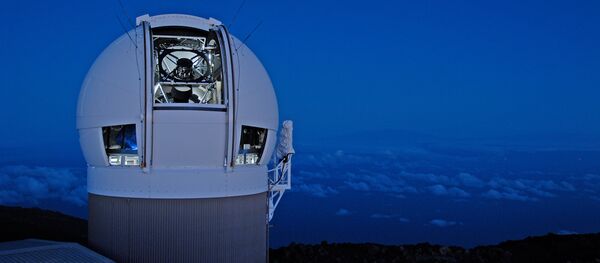It was initially feared that a space rock — dubbed TC4 — would fly past Earth at a distance of just 4,200 miles while traveling at a speed of 30,000 mph. Now NASA believe the asteroid — spanning up to 27 meters — will travel past at the slightly greater distance of around 27,000 miles on Thursday, October 12.
Scientists insist, however, that the close encounter will provide them with a rare opportunity to observe it up close and allow them to improve planetary defense systems at the same time.
Teams at the European Space Agency (ESA) as well as NASA are also planning to simulate an impact event similar to the one that occurred in Russia four years ago.
And #asteroid 2012 TC4 about to sweep close… https://t.co/Hi0B3IpdUQ
— EarthSky (@earthskyscience) October 10, 2017
NASA will use it as a test of its global asteroid defense system. pic.twitter.com/qU37LTcCzK
More than 1,000 people were injured on February, 15, 2013 after an asteroid flew above Chelyabinsk, smashing windows and resulting in many locals being showered in glass. Researchers later revealed the asteroid weighed 7,000 tons, causing a detonation with a force of 20 Hiroshima atomic bombs.
The space experts hope that the information gathered from the simulation will allow them to develop ways to deal with potentially catastrophic collisions in the future.
Dr. Detlef Koschny — a Near-Earth Object manager at the ESA — remains confident there will be no contact this time around.
"This asteroid is one which will get reasonably close, closer than the lunar distance, it is really a topic in the asteroid community. We are using this as a test, as if this were an object that will impact. We use this one as a test because it will teach us for our future observations," Dr. Koschny said.
Space experts have previously admitted it was crucial that Earth gets itself prepared for the next cosmic threat.
"A small asteroid flying past Earth on October 12 will provide scientists with a valuable opportunity to learn more about its orbit and composition. The campaign will exercise the international network of observatories and research organizations working on planetary defense," the ESA said in a statement.
Join 5 people right now at "Space in Images — 2017 — 08 — Asteroid 2012 TC4 will fly past Earth in October 2017"… https://t.co/VUCeOazj8p pic.twitter.com/Eer9GIHVEw
— Cheers for Space (@cheersforspace) August 11, 2017
On its website, NASA says: "NASA scientists are excited about the upcoming close flyby of a small asteroid and plan to use its upcoming October close approach to Earth as an opportunity not only for science, but to test NASA's network of observatories and scientists who work with planetary defense."
TC4: A Profile
Although 27,000 miles may seem a safe distance, it is only an eighth of the distance between the Earth to the moon.
It is also far enough away to miss geostationary satellites specifically positioned to boost communication and navigational systems on Earth.
First spotted by the Pan-STARRS observatory in Hawaii in 2012, it quickly disappeared only for it to be discovered again earlier this year by Chile's Very Large Telescope.
The asteroid will pass over the southern Pacific Ocean at 1:42am (Eastern Daylight Time/5:42am Universal Time). The pass is close enough that Earth's gravity will modify the orbit of TC4, which goes around the Sun once every 609 days.
Scientists say it is a fairly fast tumbler and estimate it spins once every 12.2 minutes.


